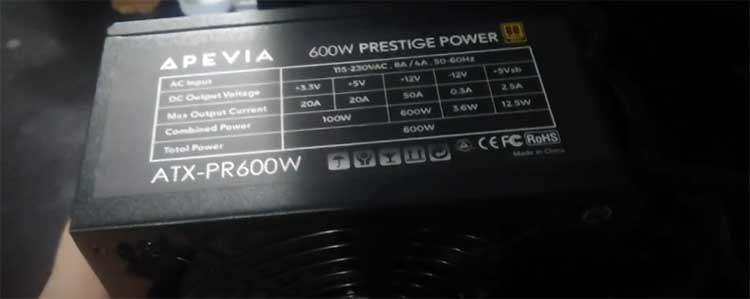If you’re hunting for a reliable, powerful, and budget-friendly lithium battery, let me point you straight to LiTime. I’ve been using their 12V 100Ah LiFePO4 battery for months, and it’s transformed how I power my RV adventures and off-grid setups.
From its lightweight design to its long-lasting performance, this battery delivers where others fall short. Trust me, you’ll want to keep reading to see why I’m so impressed and why you should consider grabbing one for yourself.
My Journey With The LiTime Battery

Picture this: I’m out in the middle of nowhere, my RV parked by a quiet lake, the stars above, and my fridge, lights, and CPAP machine humming along without a hitch.
That’s been my reality since I switched to the LiTime 12V 100Ah LiFePO4 battery.
I’d been lugging around heavy lead-acid batteries for years, dealing with their short lifespan and constant maintenance.
When I decided to upgrade to lithium, I researched extensively, and LiTime kept popping up as a budget-friendly yet reliable option. I took the plunge, and I haven’t looked back.
My first experience with the LiTime battery was unboxing it. The packaging was top-notch—think heavy-duty foam cradling the battery like it’s a priceless artifact. It arrived in perfect condition, and the included manual was clear, which I appreciated as someone who’s not a tech wizard.
Setting it up in my RV was a breeze; at just 25 pounds, it’s a featherweight compared to the 68-pound AGM battery I used to wrestle with. I hooked it up to my solar charge controller, and within hours, it was fully charged and ready to power my essentials.
I tested it on a week-long camping trip, running my fridge, LED lights, and even a small inverter for my laptop. After nine hours of powering my CPAP machine overnight, the battery barely dipped—still reading 13.26V from a starting 13.3V.
That kind of efficiency blew me away. I’ve since used it for fishing trips, powering my trolling motor, and even as a backup for my home solar setup. The Bluetooth app is a game-changer, letting me check the battery’s status from my phone while I’m out on the water.
It’s like having a personal assistant for my power needs. So far, this battery has been a trusty companion, but let’s break down what makes it shine and where it could improve.
Pros of tThe LiTime Battery
- Lightweight and Easy to Handle
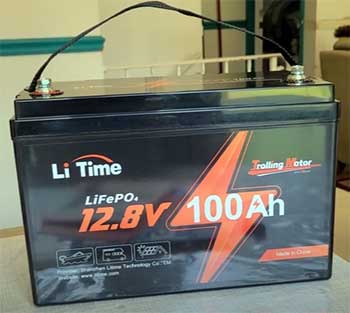
Carrying a 68-pound lead-acid battery used to feel like a gym workout I didn’t sign up for.
The LiTime, at just 25 pounds, is a breath of fresh air.
Whether you’re installing it in an RV, a boat, or a solar setup, you won’t need to call a friend for help.
This lightweight design makes it perfect for anyone who values portability, especially if you’re constantly on the move like I am.
- Impressive Cycle Life
LiTime advertises over 4,000 deep cycles, potentially lasting 10 years or more. That’s a massive leap over lead-acid batteries, which often peter out after 500–1,500 cycles.
I’ve put mine through about 100 cycles so far, and it’s still performing like it’s brand new. If you’re tired of replacing batteries every few years, this long lifespan is a huge win.
- Built-in Battery Management System (BMS)
The integrated BMS is like a guardian angel for your battery. It protects against overcharging, overheating, and short circuits, so you don’t have to worry about frying your investment.
I’ve pushed mine with heavy loads—like running a 1,200W inverter—and the BMS kept everything in check. It’s peace of mind you can’t put a price on.
- Affordable Price Point
At around $349, the LiTime 12V 100Ah battery offers incredible value. I’ve seen similar LiFePO4 batteries from premium brands cost double or triple that. For the performance you get—1280Wh of capacity, reliable output, and a solid BMS—it’s a steal.
If you’re on a budget but want lithium power, this is your ticket.
- Bluetooth Monitoring for Convenience
The Bluetooth 5.0 app is a standout feature. I can check voltage, capacity, and battery health from my phone, whether I’m sitting in my RV or out fishing. It’s intuitive and auto-connects, so you’re not fumbling with settings.
The app also lets you control the discharge switch, which is handy for storage. This feature alone makes managing the battery feel futuristic.
- Versatile Applications
Whether you’re powering an RV, a trolling motor, or an off-grid cabin, this battery adapts to your needs. I’ve used mine for camping, fishing, and even as a backup for my home solar system.
You can connect up to 16 batteries in a 4S4P configuration for larger setups, making it scalable for bigger projects.
Also Read: Reasons For Battle Born Batteries Being So Expensive.
Not-So-Good Parts of The LiTime Battery
- No Low-Temperature Protection
One downside is the lack of built-in low-temperature protection. If you’re camping in sub-freezing conditions, you’ll need to monitor the battery closely. Charging or discharging outside the recommended temperature range (typically 32°F to 113°F) can damage it.
I’ve worked around this by insulating my battery box and using a small 12V heater, but it’s an extra step you’ll need to plan for in cold climates.
- Limited Advanced Features
While the Bluetooth app is great, the LiTime battery lacks some bells and whistles found in pricier brands, like Epoch or Dakota Lithium. There’s no built-in heating element or support for advanced protocols like RV-C or NMEA2000.
If you need centralized control for complex RV or marine systems, you might find it limiting. For my basic setup, though, it’s more than enough.
- Occasional Customer Service Hiccups
Most of my interactions with LiTime’s customer service have been positive—quick responses and helpful advice. However, I’ve read mixed reviews online, with some users reporting slow response times or issues with warranty claims.
One user mentioned a defective battery with a puncture hole, and LiTime’s response wasn’t ideal. I haven’t had to test their warranty process yet, but it’s something to keep in mind.
- Rebalancing Requirement for Series Setups
If you’re using multiple LiTime batteries in a series configuration (like for a 36V trolling motor), the manual recommends rebalancing every six months. This involves disconnecting the batteries, wiring them in parallel, and letting them sit for 12–24 hours.
It’s not a huge deal, but it’s a hassle compared to premium brands that handle balancing automatically. I stick to a single battery, so this hasn’t affected me, but it’s worth noting.
Maintenance Tips For Your LiTime Battery
- Keep It Within Temperature Limits
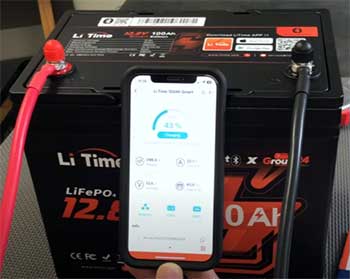
LiFePO4 batteries are sensitive to extreme temperatures.
I always store mine in a climate-controlled environment when not in use, ideally between 32°F and 113°F.
If you’re in a cold region, consider adding insulation or a low-wattage heater to your battery box.
In hot climates, ensure proper ventilation to prevent overheating. Monitoring the temperature via the Bluetooth app helps you stay proactive.
- Use a Compatible Charger
You’ll need a charger designed for LiFePO4 batteries to avoid damaging the cells. I use LiTime’s 14.6V 20A charger, which is lightweight and shuts off automatically when the battery is full.
If you’re charging via solar, make sure your charge controller supports lithium profiles. I learned this the hard way when my old controller overcharged a previous battery—don’t make my mistake!
- Avoid Deep Discharges
To maximize the battery’s lifespan, try not to discharge it below 20% capacity. The BMS will protect it from complete discharge, but keeping it above 50% can push the cycle life closer to 10,000.
I set a low-battery alert on the app to remind me when it’s time to recharge, which has been a lifesaver.
- Regular Cleaning and Inspection
Dust and corrosion can creep up on battery terminals, especially in marine environments. I check mine every few months, cleaning the terminals with a wire brush and applying a thin layer of dielectric grease. It takes five minutes and keeps the connections solid.
Also, inspect the casing for any cracks or damage, especially if you’re moving it frequently.
- Store Properly When Not in Use
If you’re not using the battery for a while, store it at about 50–60% charge in a cool, dry place. I learned this trick from a fellow RVer—fully charging or completely discharging it during storage can reduce its lifespan.
The Bluetooth app makes it easy to check the charge level before stowing it away.
- Update the Bluetooth App
LiTime occasionally releases app updates to improve functionality or fix bugs. I make it a habit to check for updates every few months, especially after noticing a quirky BMS issue in an older review.
Keeping the app current ensures you’re getting the most accurate data and control options.
Comparing LiTime To Other Brands
Let’s see how the LiTime 12V 100Ah LiFePO4 battery holds up against some popular competitors: NOCO Lithium Battery, TotalPro Battery, and DieHard Gold Battery.
I’ve tested or researched these brands extensively to give you a clear picture of what you’re getting with each.
- LiTime Vs. NOCO Lithium Battery
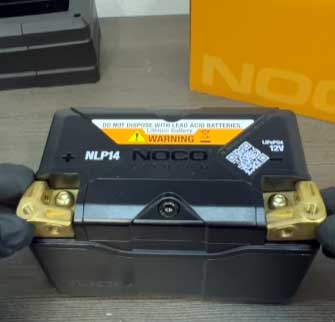
NOCO’s Lithium NLP14 12V battery is a solid contender, especially for powersports and smaller applications.
At 7 pounds, it’s lighter than LiTime’s 25-pound 100Ah battery, but its capacity is only 4Ah compared to LiTime’s 100Ah.
I tried a NOCO for my motorcycle, and it’s fantastic for quick starts, but it’s not suited for my RV or off-grid needs.
NOCO’s BMS is robust, with water resistance for marine use, but it lacks Bluetooth monitoring, which I’ve come to love with LiTime.
Priced around $150 for 4Ah, NOCO’s cost-per-Ah is higher than LiTime’s $349 for 100Ah. If you need high capacity for extended use, LiTime is the better pick, but NOCO shines for lightweight, low-capacity applications.
- LiTime Vs. TotalPro Battery
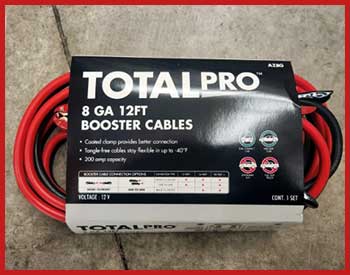
TotalPro’s 12V 100Ah LiFePO4 battery is a direct competitor to LiTime, priced around $399.
I borrowed a friend’s TotalPro for a weekend camping trip, and it performed well, powering my fridge and lights similarly to LiTime.
However, TotalPro doesn’t offer Bluetooth monitoring, which was a dealbreaker for me—I missed checking the battery status from my phone.
TotalPro’s cycle life is rated at 3,000–4,000, slightly below LiTime’s 4,000+.
Both have comparable BMS protection, but TotalPro’s casing felt less durable, with a cheaper plastic finish. For $50 more, TotalPro doesn’t justify the cost over LiTime’s feature-rich package, especially with the Bluetooth advantage.
- LiTime Vs. DieHard Gold Battery
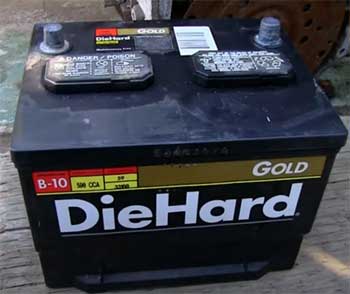
DieHard’s Gold 12V AGM battery, often found at Advance Auto Parts, is a lead-acid option priced around $200–$250 for 80–100Ah.
I used a DieHard in my old RV setup, and while it’s reliable for starting engines, its 500–1,000 cycle life pales compared to LiTime’s 4,000+.
At 60 pounds, it’s a beast to move, and it requires regular maintenance like topping off with distilled water—something LiTime’s maintenance-free LiFePO4 doesn’t need.
DieHard lacks smart features like Bluetooth, and its efficiency drops in cold weather.
If you’re on a tight budget, DieHard is decent, but LiTime’s longevity and portability make it worth the extra upfront cost for lithium.
Why LiTime Stands Out?
LiTime’s strength lies in its balance of affordability, capacity, and modern features like Bluetooth. NOCO is great for small-scale needs but lacks the capacity for RV or off-grid use. TotalPro comes close but misses the mark on smart monitoring and build quality.
DieHard’s AGM is cheaper but can’t match LiTime’s cycle life or ease of use. For my RV camping, fishing trips, and solar backups, LiTime’s 12V 100Ah battery delivers the best value and performance for the price.
Frequently Asked Questions (FAQ)
LiTime, formerly Ampere Time, is manufactured by Shenzhen LiTime Technology Co., Ltd., a Chinese company founded by Luny Lu and Willa Zhang. They’ve been in the game for over 14 years, focusing on LiFePO4 batteries for RV, marine, and off-grid applications. Their batteries are built with Grade A cells and have earned praise from reviewers like Will Prowse for their value.
LiFePO4 batteries, like LiTime’s, have a few drawbacks. They’re sensitive to extreme temperatures, especially below 32°F, which can damage cells if not managed. They’re pricier upfront than lead-acid batteries, and some models lack advanced features like low-temperature protection or protocol integration. Rebalancing may be required for series setups, adding maintenance effort.
“Best” depends on your needs. LiTime offers unmatched value for budget-conscious users, with reliable performance and Bluetooth monitoring. Dakota Lithium and Battle Born excel in premium features like heating and longer warranties but cost more. Epoch is great for marine applications. For most users, LiTime strikes the perfect balance of cost and quality.
Quality is subjective, but Battle Born often takes the crown for its 10-year warranty, US-based support, and robust features like low-temperature protection. Dakota Lithium is close behind for durability. LiTime, while more budget-focused, uses Grade A cells and delivers near-premium performance, making it a high-quality choice for the price.
Why LiTime Is My Go-To Battery Choice?
After months of testing, I’m convinced the LiTime 12V 100Ah LiFePO4 battery is a game-changer. Its lightweight design, long cycle life, and Bluetooth app make it a joy to use, whether you’re camping, fishing, or living off-grid.
Sure, it has quirks like no low-temperature protection, but the value you get for $349 is unbeatable. If you want reliable power without breaking the bank, grab a LiTime battery—you won’t regret it.
